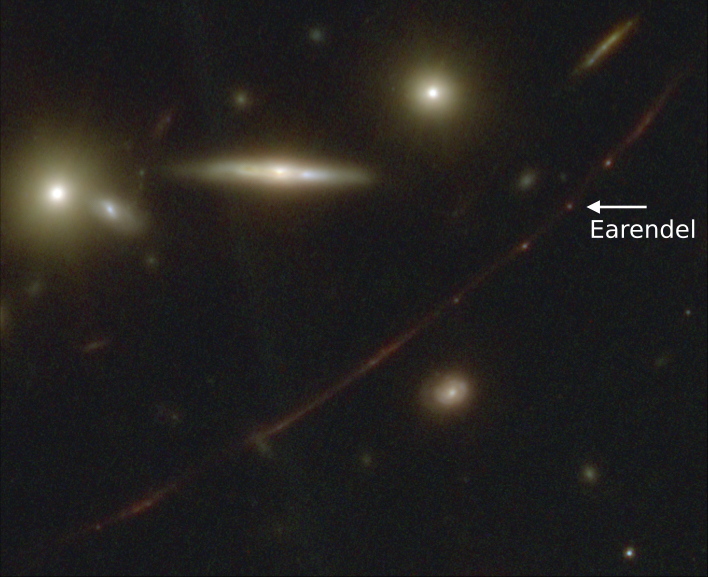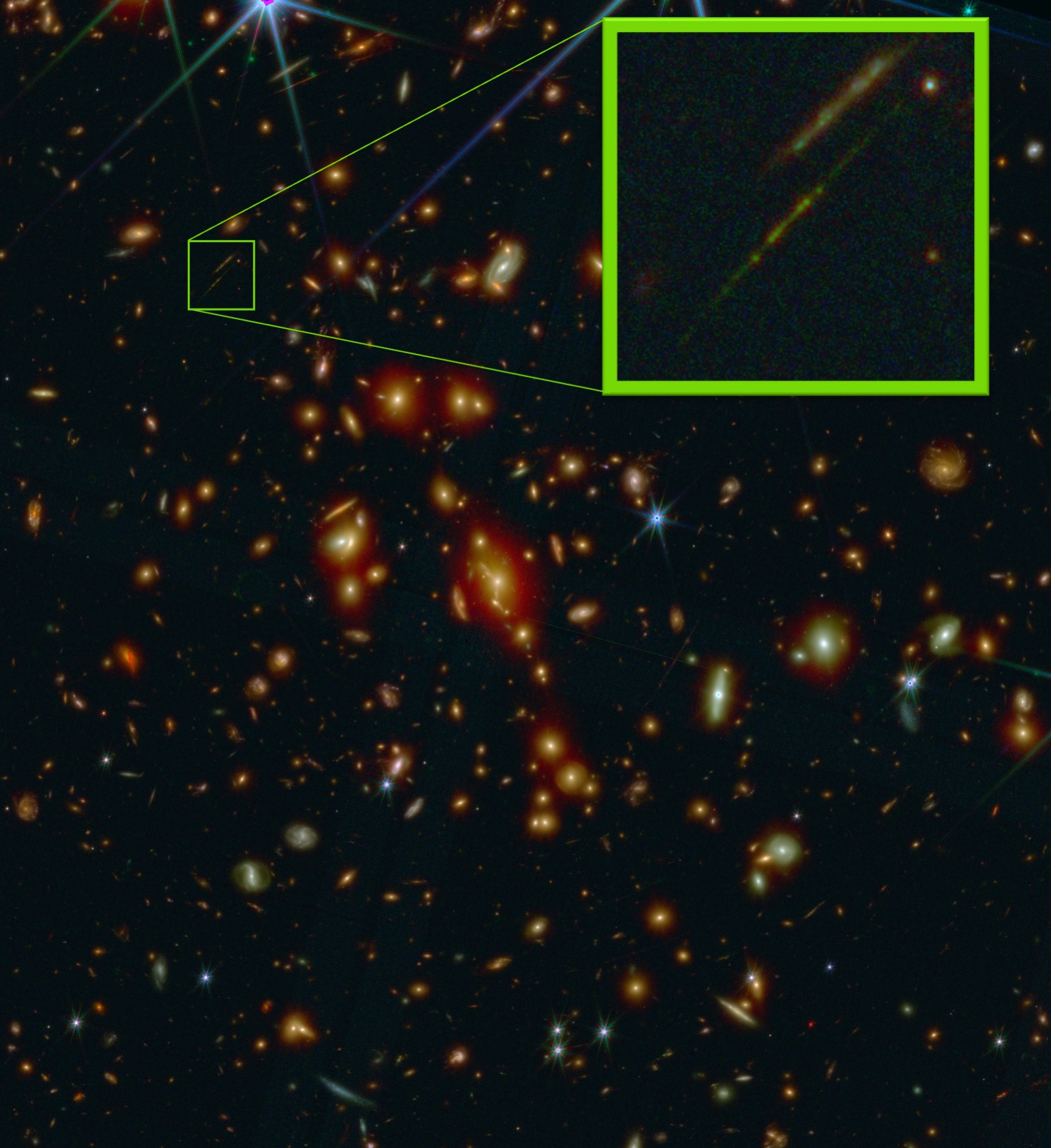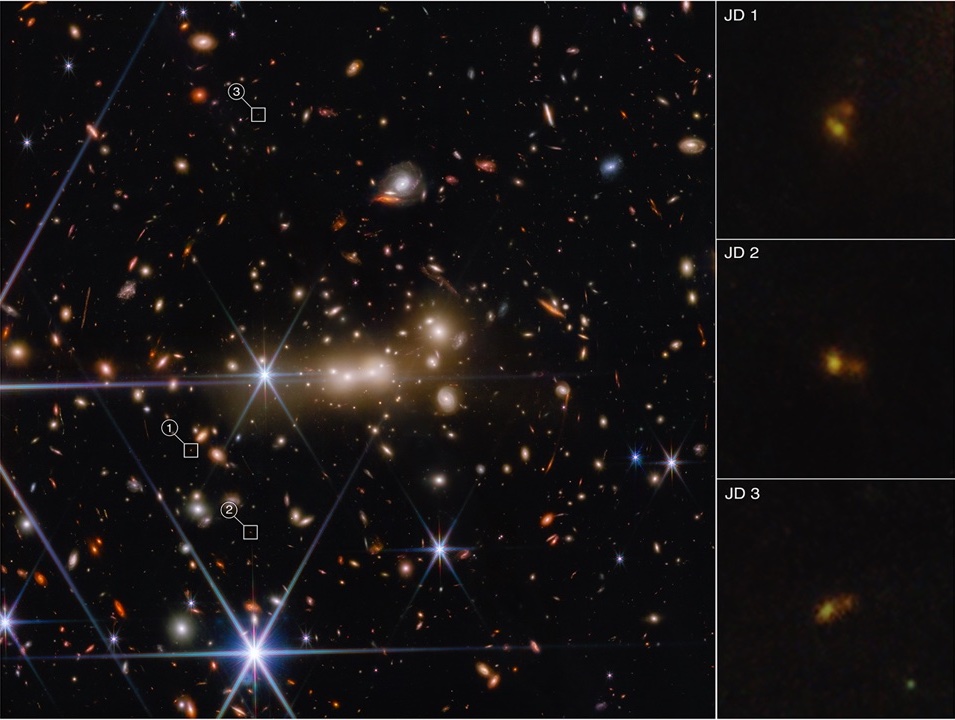Papers
- Brian Welch et al. (arXiv:2208.09007, ApJ 940 1) – JWST Imaging of Earendel, the Extremely Magnified Star at Redshift z = 6.2
- Larry Bradley et al. (arXiv:2210.01777, ApJ 955 13) – High-Redshift Galaxy Candidates at z = 9 − 10 as Revealed by JWST Observations of WHL0137-08
- Tiger Hsiao et al. (arXiv:2210.14123, ApJ 949 34) – JWST reveals a possible z∼11 galaxy merger in triply-lensed MACS0647−JD
- Eros Vanzella et al. (arXiv:2211.09839, ApJ 944 53) – JWST/NIRCam Probes Young Star Clusters in the Reionization Era Sunrise Arc
- Ashish Kumar Meena et al. (arXiv:2211.13334, ApJL 944 6) – Two lensed star candidates at z≃4.8 behind the galaxy cluster MACS J0647.7+7015
- Abdurro'uf et al. (arXiv:2301.02209, ApJ 945 117) – Spatially Resolved Stellar Populations of 0.3<z<6.0 Galaxies in WHL0137-08 and MACS0647+70 Clusters as Revealed by JWST: How do Galaxies Grow and Quench Over Cosmic Time?
- Tiger Hsiao et al. (arXiv:2305.03042, ApJ 973 8) – JWST NIRSpec spectroscopy of the triply-lensed z=10.17 galaxy MACS0647−JD
- Lukas Furtak et al. (arXiv:2308.00042, MNRASL 527 7) – Reaching for the stars -- JWST/NIRSpec spectroscopy of a lensed star candidate at z = 4.76
- Anton Vikaeus et al. (arXiv:2309.02504, MNRAS 529 1299) – To be, or not to be: Balmer breaks in high-z galaxies with JWST
- Meghana Killi et al. (arXiv:2312.03065, A&A 691 A52) – Deciphering the JWST spectrum of a 'little red dot' at z∼4.53: An obscured AGN and its star-forming host
- Angela Adamo et al. (arXiv:2401.03224, Nature 632 513) – The discovery of bound star clusters 460 Myr after the Big Bang
- Larry Bradley et al. (arXiv:2404.10770) – Unveiling the Cosmic Gems Arc at z ∼ 10.2 with JWST
- Abdurro'uf et al. (arXiv:2404.16201, ApJ 973 47) – JWST NIRSpec High-resolution Spectroscopy of MACS0647-JD at z=10.167: Resolved [OII] Doublet and Electron Density in an Early Galaxy
- Tiger Hsiao et al. (arXiv:2404.16200, ApJ 973 81) – JWST MIRI detections of Hα and [O III] and direct metallicity measurement of the z=10.17 lensed galaxy MACS0647−JD
- Tiger Hsiao et al. (arXiv:2409.04625) – First direct carbon abundance measured at z>10 in the lensed galaxy MACS0647−JD


